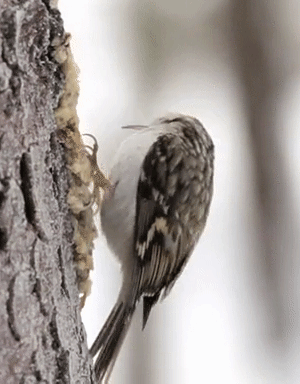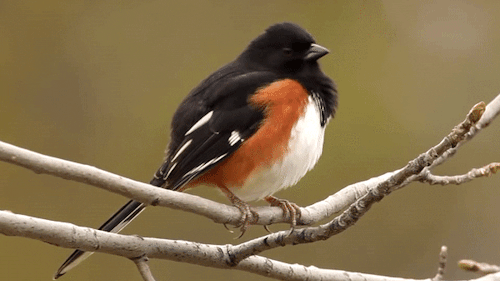(unmute)
(unmute)
More Posts from Eggxecutive-dysfunction and Others


I hate the suburbs so much it’s unreal bro
“I visited the pumpkin patch yesterday and decided to bring home a pumpkin that in shape appeared to be a penguin. Friends and family were mystified until I started painting him.“






by Volensblood

Southern Sky at 38,000 Feet : Celestial sights of the southern sky shine above a cloudy planet Earth in this gorgeous night sky view. The scene was captured from an airliner’s flight deck at 38,000 feet on a steady westbound ride to Lima, Peru. To produce the sharp airborne astrophotograph, the best of a series of short exposures were selected and digitally stacked. The broad band of the southern Milky Way begins at top left with the dark Coalsack Nebula and Southern Cross. Its expanse of diffuse starlight encompasses the the Carina Nebula and large Gum Nebula toward the right. Canopus, alpha star of Carina and second brightest star in Earth’s night is easy to spot below the Milky Way, as is the dwarf galaxy known as the Large Magellanic Cloud. The Small Magellanic cloud just peeks above the cloudy horizon. Of course, the South Celestial Pole also lies within the starry southern frame. via NASA


Jupiter s Swimming Storm : A bright storm head with a long turbulent wake swims across Jupiter in these sharp telescopic images of the Solar System’s ruling gas giant. Captured on August 26, 28, and September 1 (left to right) the storm approximately doubles in length during that period. Stretching along the jetstream of the planet’s North Temperate Belt it travels eastward in successive frames, passing the Great Red Spot and whitish Oval BA, famous storms in Jupiter’s southern hemisphere. Galilean moons Callisto and Io are caught in the middle frame. In fact, telescopic skygazers following Jupiter in planet Earth’s night have reported dramatic fast moving storm outbreaks over the past few weeks in Jupiter’s North Temperate Belt. via NASA

Man found the stoplight cameras were activated during yellow lights and decided to cut the wires of it.

Bipedal running has convergently evolved multiple times in squamate reptiles, known in over 50 modern species – and fossil evidence shows this is nothing new, with lizards repeatedly developing the ability to sprint on their hind legs for well over 100 million years.
Huehuecuetzpalli mixtecus here lived in east-central Mexico during the mid-Cretaceous, about 105 million years ago. About 25cm long (10"), it was part of an early branch of the iguanomorph lineage, related to the ancestors of modern lizards like iguanas, chameleons, and agamids.
Its limb proportions indicate it would have been a bipedal runner, making it one of the earliest known examples of this type of locomotion in lizards. Its skull also had some features convergent with varanids, suggesting it may have had a similar sort of active-pursuit-hunting ecology.
———
Nix Illustration | Tumblr | Pillowfort | Twitter | Patreon


Eurasian Treecreeper - ML201049451, Per Naesje

Gray Catbird (Dumetella carolinensis)
© Kyle Jones


Eastern Towhee, Lang Elliot
-
 starrypaint09 reblogged this · 2 weeks ago
starrypaint09 reblogged this · 2 weeks ago -
 starrypaint09 liked this · 2 weeks ago
starrypaint09 liked this · 2 weeks ago -
 sparkycane reblogged this · 2 weeks ago
sparkycane reblogged this · 2 weeks ago -
 sparkycane liked this · 2 weeks ago
sparkycane liked this · 2 weeks ago -
 no-gutz-no-glory liked this · 2 weeks ago
no-gutz-no-glory liked this · 2 weeks ago -
 tiorx liked this · 2 weeks ago
tiorx liked this · 2 weeks ago -
 randomexistingtoy liked this · 2 weeks ago
randomexistingtoy liked this · 2 weeks ago -
 randomexistingtoy reblogged this · 2 weeks ago
randomexistingtoy reblogged this · 2 weeks ago -
 barnowlz reblogged this · 2 weeks ago
barnowlz reblogged this · 2 weeks ago -
 barnowlz liked this · 2 weeks ago
barnowlz liked this · 2 weeks ago -
 thearunadragon liked this · 2 weeks ago
thearunadragon liked this · 2 weeks ago -
 snomcat reblogged this · 2 weeks ago
snomcat reblogged this · 2 weeks ago -
 snomcat liked this · 2 weeks ago
snomcat liked this · 2 weeks ago -
 not13opossums liked this · 2 weeks ago
not13opossums liked this · 2 weeks ago -
 bruhger liked this · 2 weeks ago
bruhger liked this · 2 weeks ago -
 jaywhy reblogged this · 2 weeks ago
jaywhy reblogged this · 2 weeks ago -
 likeducks2360 liked this · 2 weeks ago
likeducks2360 liked this · 2 weeks ago -
 elidiot reblogged this · 2 weeks ago
elidiot reblogged this · 2 weeks ago -
 elidiot liked this · 2 weeks ago
elidiot liked this · 2 weeks ago -
 trekkie5249 liked this · 2 weeks ago
trekkie5249 liked this · 2 weeks ago -
 lullabxby liked this · 2 weeks ago
lullabxby liked this · 2 weeks ago -
 thefoolishone666 reblogged this · 2 weeks ago
thefoolishone666 reblogged this · 2 weeks ago -
 thefoolishone666 liked this · 2 weeks ago
thefoolishone666 liked this · 2 weeks ago -
 seanheexsists liked this · 2 weeks ago
seanheexsists liked this · 2 weeks ago -
 arsonandcrime liked this · 2 weeks ago
arsonandcrime liked this · 2 weeks ago -
 arsonandcrime reblogged this · 2 weeks ago
arsonandcrime reblogged this · 2 weeks ago -
 pudl-e liked this · 2 weeks ago
pudl-e liked this · 2 weeks ago -
 earthlyblur liked this · 2 weeks ago
earthlyblur liked this · 2 weeks ago -
 astronautjaws liked this · 2 weeks ago
astronautjaws liked this · 2 weeks ago -
 astronautjaws reblogged this · 2 weeks ago
astronautjaws reblogged this · 2 weeks ago -
 sqrt-73 liked this · 2 weeks ago
sqrt-73 liked this · 2 weeks ago -
 sergeantsarcasm7 liked this · 2 weeks ago
sergeantsarcasm7 liked this · 2 weeks ago -
 hootispootis reblogged this · 2 weeks ago
hootispootis reblogged this · 2 weeks ago -
 rath-and-shield liked this · 2 weeks ago
rath-and-shield liked this · 2 weeks ago -
 trophyydyke liked this · 2 weeks ago
trophyydyke liked this · 2 weeks ago -
 loonarmuunar reblogged this · 2 weeks ago
loonarmuunar reblogged this · 2 weeks ago -
 loonarmuunar liked this · 2 weeks ago
loonarmuunar liked this · 2 weeks ago -
 sardineskissing liked this · 2 weeks ago
sardineskissing liked this · 2 weeks ago -
 snail-speed reblogged this · 2 weeks ago
snail-speed reblogged this · 2 weeks ago -
 snail-speed liked this · 2 weeks ago
snail-speed liked this · 2 weeks ago -
 electricbones reblogged this · 2 weeks ago
electricbones reblogged this · 2 weeks ago -
 electricbones liked this · 2 weeks ago
electricbones liked this · 2 weeks ago -
 transcyberism reblogged this · 2 weeks ago
transcyberism reblogged this · 2 weeks ago -
 transcyberism liked this · 2 weeks ago
transcyberism liked this · 2 weeks ago -
 realribs liked this · 2 weeks ago
realribs liked this · 2 weeks ago -
 yourshittylaptop reblogged this · 2 weeks ago
yourshittylaptop reblogged this · 2 weeks ago -
 artisanalgoats reblogged this · 2 weeks ago
artisanalgoats reblogged this · 2 weeks ago -
 anime093se liked this · 2 weeks ago
anime093se liked this · 2 weeks ago -
 penthepoet reblogged this · 2 weeks ago
penthepoet reblogged this · 2 weeks ago
